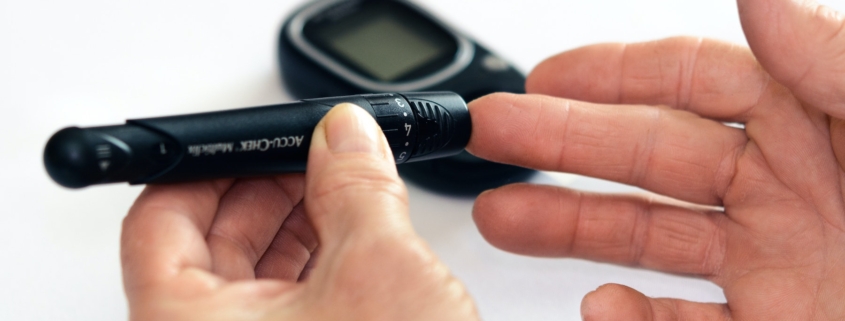Diving Deep into Diabetes for American Diabetes Month
 Did you know that there are over 34 million people in the United States with diabetes? Odds are you know someone who has this disease. However, according to the CDC, a staggering 1 in 5 people are not aware that they have diabetes. That is why acknowledging National Diabetes Education Week is so critical, to help spread awareness of this common disease.
Did you know that there are over 34 million people in the United States with diabetes? Odds are you know someone who has this disease. However, according to the CDC, a staggering 1 in 5 people are not aware that they have diabetes. That is why acknowledging National Diabetes Education Week is so critical, to help spread awareness of this common disease.
National diabetes education week is celebrated during the first week of November, a month that also happens to be American Diabetes Month. The theme for this year’s education week is prediabetes and the prevention of type 2 diabetes. Through healthy eating and moderate exercise, a person may be able to reverse a diagnosis of prediabetes.
You often hear a conversation about diabetes and eating revolve around carbohydrates and restriction, however you do not have to restrict carbohydrates just because you have diabetes. Carbohydrates are an important part of everyone’s diet, especially those with diabetes. Even with a diagnosis of diabetes, you can still enjoy any of the foods you once loved.
Reducing Your Risk of Diabetes
Type 2 diabetes is often diagnosed in adulthood and involves many risk factors. While certain risk factors cannot be avoided, such as genetics and age, you can reduce your risk of developing diabetes with a few lifestyle adjustments. Here are just a few ways to reduce your risk of diabetes:
- Nourishment: A well-rounded diet is essential to help reduce your risk. Choose whole foods with more fiber such as fresh fruit and vegetables and fewer foods with added sugars. Fiber is important too for glycemic control, so try to include foods with more complex carbohydrates like whole grains.
- Physical Movement: Always check with your doctor before starting a new exercise regimen. At least 30 minutes of physical activity a day is the standard recommendation. Start small by just going for a walk and push yourself to do more and more as your endurance kicks up.
- Don’t Restrict: You don’t have to restrict foods that you enjoy from your diet, everything in moderation. Instead of focusing on “bad” foods and “good” foods, focus on eating meals that are colorful and include items from every food group.
- Go to the Doctor: Regular checkups and bloodwork can make all the difference in the prevention of disease. Don’t skip out on your yearly physical.
Choosing a Carbohydrate
For years medical professionals have demonized carbohydrates in every form. A diagnosis of type 2 diabetes used to be synonymous with carbohydrate restriction, however, it shouldn’t be. Instead of restricting carbohydrates, focus on choosing complex carbohydrates. Here are just a few:
- Oatmeal: Not only a great start to the morning, its also full of fiber that can help you feel satiated and improve glycemic control.
- Beans: Not only a complex carbohydrate but also a nonmeat source of protein.
- Quinoa: Older grains are making a comeback and you can find them in almost any supermarket. What makes them great is that they are rich in fiber!
- Apples: Make sure to eat the whole apple with the skin to obtain the most nutrients. The fiber in the apple is what helps to keep optimal glycemic control.
If you or someone you know has been diagnosed with diabetes, don’t be afraid to ask questions and do your research.
If you need help with the management of your diabetes or pre-diabetes, check out my Healthy Living with Diabetes Program™. This program includes education on the areas that impact your blood glucose such as: Nutrition, Movement, Habits and Behaviors, Stress Management, and Sleep Hygiene.
Your Turn to Action: What are you going to do to help reduce your risk of type 2 diabetes? Let me know in the comments below.


Leave a Reply
Want to join the discussion?Feel free to contribute!